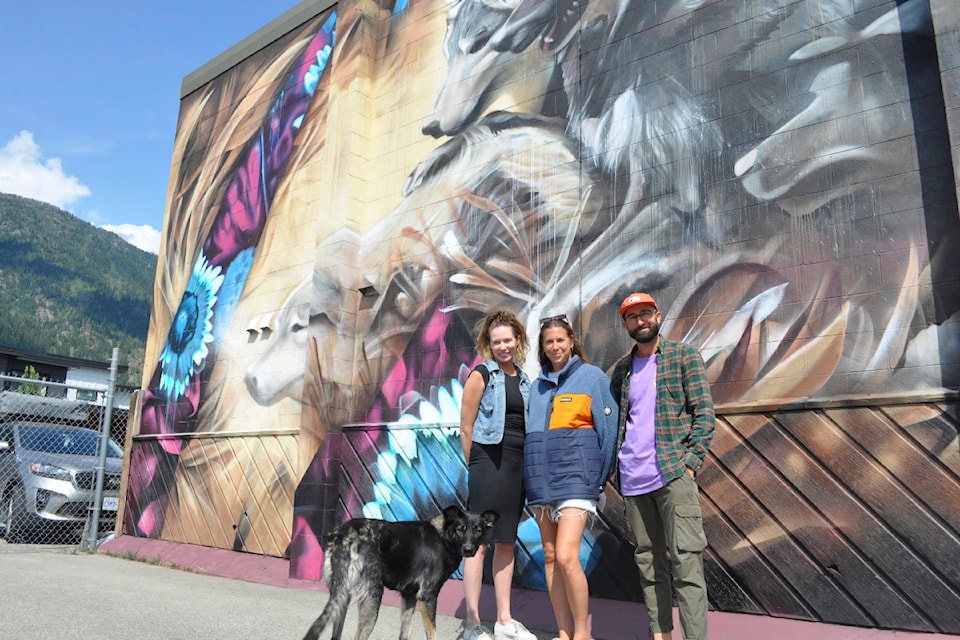Sadie Parr wants Nelson to consider wolves as a part of the city's pack.
Parr is founder of WeHowl, a non-profit organization advocating for an end to B.C.'s wolf cull program. WeHowl fundraised for the installation of two new murals in Nelson and Vancouver meant to start dialogue about the species and its importance to the province's ecosystems.
sa���ʴ�ý�I think of Nelson just as a highly conscientious area that is in touch with nature and the environment. It's always kind of resonated that to me. It's a beautiful place where there could and should be wolves.sa���ʴ�ý�
The Nelson mural was painted on the side of Samurai Hardwood Flooring at 900 Simpson Rd. by Dominic Laporte and Anaϊs Labrèque of Drift Mural Co.
Laporte, an Ottawa-based artist who two years ago painted another mural in the city as part of the Nelson International Mural Festival, said he wanted the piece to portray wolves in a kinder light than that of rarely seen predators.
sa���ʴ�ý�[I wanted to] to show the vibrancy of a wolf pack, and the fluidity of the movement and how they migrate, and things like that. Just a really positive representation of wolves.sa���ʴ�ý�
B.C. began its wolf cull in 2015 as part of its Caribou Recovery Program. A total of 248 wolves were killed by aerial shootings in B.C between December 2023 and March 2024, according to the Ministry of Water, Land and Resource Stewardship.
The conservation organization Pacific Wild says B.C. has killed 2,192 wolves since 2015, while a CBC report published in December found the province had spent $10 million to date on the program.
The province defends the wolf cull, which has been extended to run through 2027, as an effective way to restore dwindling caribou herds, several of which are now extinct in the West Kootenay region. B.C. has also created for caribou, while the Arrow Lakes Caribou Society near Nakusp maintains maternity pens to help raise calves before reintroducing them into the wild.
A study published earlier this year by the journal Ecological Applications suggested B.C. and Alberta since 2020 compared to if nothing had been done. But the study also says caribou habitat restoration has been hampered by industry, a point echoed by opponents of the wolf cull who argue .
Parr says the argument in favour of the cull is what the province considers to be a healthy wolf population, which a spokesperson for the Ministry of Water, Land and Resource Stewardship says is approximately 8,500 based on an estimated range between 5,300 and 11,600.
That, in Parr's opinion, isn't nuanced enough.
sa���ʴ�ý�When you start to understand wolves more it is far beyond population. It's about kin-based families, if they're going to be able to perform their ecological role properly," she said.
"There are the bonds among these animals being so family oriented and intelligent. With the killing that we're doing, it's not just the individual that suffers. It's the whole family that takes that repercussion and just creates chaos, which then has this ripple effect throughout the ecosystem.sa���ʴ�ý�
Parr hopes to visit Nelson for a presentation on wolves and the cull program. It's become socially unacceptable in the province to kill bears, and she says that needs to become the case for wolves as well.
sa���ʴ�ý�Isa���ʴ�ý�m hoping to be able to stimulate more of these conversations. Starting small but with ongoing dialog people will learn more, because wolves are incredibly fascinating and complicated, but certainly worth knowing and worth preserving.sa���ʴ�ý�



